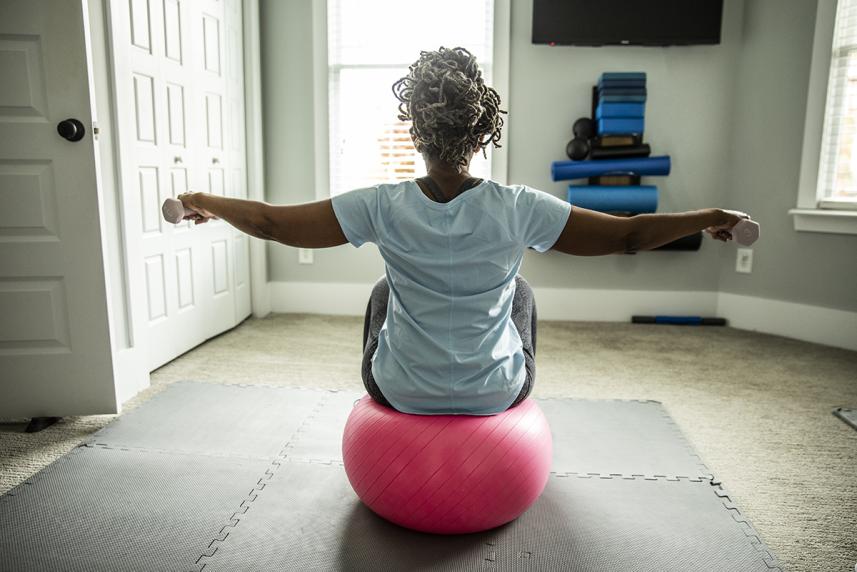Relieve back pain without opioids
Back pain is no joke. The dull, constant ache. The sharp pains or tingling sensations. But the good news: There are loads of remedies to try. Here are six effective methods to discuss with your doctor.

If you’re among the tens of millions of Americans looking for alternatives to opioid painkillers or surgery for ongoing back problems, there’s good news: There are plenty of alternative treatment options for back pain that can provide just as much (if not more) relief.
In fact, most patients with chronic back pain won’t benefit from surgery, says Jianguo Cheng, M.D., Ph.D., president of the American Academy of Pain Medicine. He also notes that opioids should always be one of the last options you and your doctor discuss.
According to Dr. Cheng, what does help is often a mix-and-match combination of treatments. Here’s a closer look at some of those therapies.
1. Physical or chiropractic therapy
Long gone are the days when rest was prescribed for aching backs. Today, we know that strengthening core muscles plays a key role in stabilizing the spine and helping your back withstand more stress. Physical therapy and stretching are two of the best treatment options for back pain. Although the exercises prescribed for back pain vary from patient to patient, it’s important to take your therapist’s orders seriously and perform all of the exercises they recommend.
Although chiropractors can be a viable option for pain relief, always check with your medical doctor first. There are health risks associated with seeing a chiropractor if you have certain health conditions, including high blood pressure.
Best for: All types of chronic back pain.
2. Yoga/stretching
When adults with chronic back pain were put on either a 12-week yoga regimen or a combination of stretching and strength training, both groups achieved more improved function than a group that received a booklet of coping strategies. It is important, however, that the exercises be gentle (no power yoga) and focus on the back and legs. Make sure to attend classes at a qualified center with experience in back pain management. And don’t try to do an exercise if it feels painful or uncomfortable.
Best for: Moderate chronic back pain.
3. Nerve blockers
If your doctor has pinpointed the exact cause and location of your pain, you may be a candidate for either an epidural steroid injection, a facet joint injection, or a lumbar sympathetic blocker. The evidence for nerve blockers is generally good, but the results can vary from patient to patient. Some individuals experience immediate relief, while others may not notice any substantial benefits for a few weeks, or until they’ve had a few series of injections. (They’re often repeated three to six times a year.) These treatments are frequently prescribed along with physical therapy.
Best for: Back pain with a known cause, although some doctors use them to rule out certain causes of pain if patients don’t respond to the injection.
4. Balloon kyphoplasty
To treat a vertical compression fracture, your doctor may recommend inserting an orthopedic balloon directly into the affected portion of the spine. The inflated balloon lifts and repositions the damaged bone, then a bone cement injection holds it in place.
Best for: Vertical compression fractures.
5. Electrotherapy
The evidence for TENS units (or transcutaneous electrical nerve stimulators) is mixed, but many doctors say it’s worth a try for temporary relief. Here, battery-powered electrodes placed on your skin block incoming pain signals from the peripheral nerves. The stimulation is thought to release a flood of pain-numbing endorphins.
Best for: Nerve-related pain.
6. Acupuncture
As with electrotherapy, the verdict is still out on acupuncture, a centuries-old method of relieving pain through the insertion of super-thin needles into specific points on the body. But it’s important to note that, in one study from the Archives of Internal Medicine, those who were experiencing back pain and underwent acupuncture reported lower levels of discomfort than those who didn’t experience the treatment.
Plus, acupuncture is virtually painless, so it could be worth it to give it a shot.
Best for: Moderate chronic back pain.


